Heart and Hopes of Horden
 In Horden, we created a Healthy Happy Places collective with the partners below to work alongside residents to understand experiences of living in the village and explore what opportunities there may be to improve areas of the village using the Healthy Happy Places ingredients that could impact on mental health, wellbeing, and economic prospects.
In Horden, we created a Healthy Happy Places collective with the partners below to work alongside residents to understand experiences of living in the village and explore what opportunities there may be to improve areas of the village using the Healthy Happy Places ingredients that could impact on mental health, wellbeing, and economic prospects.
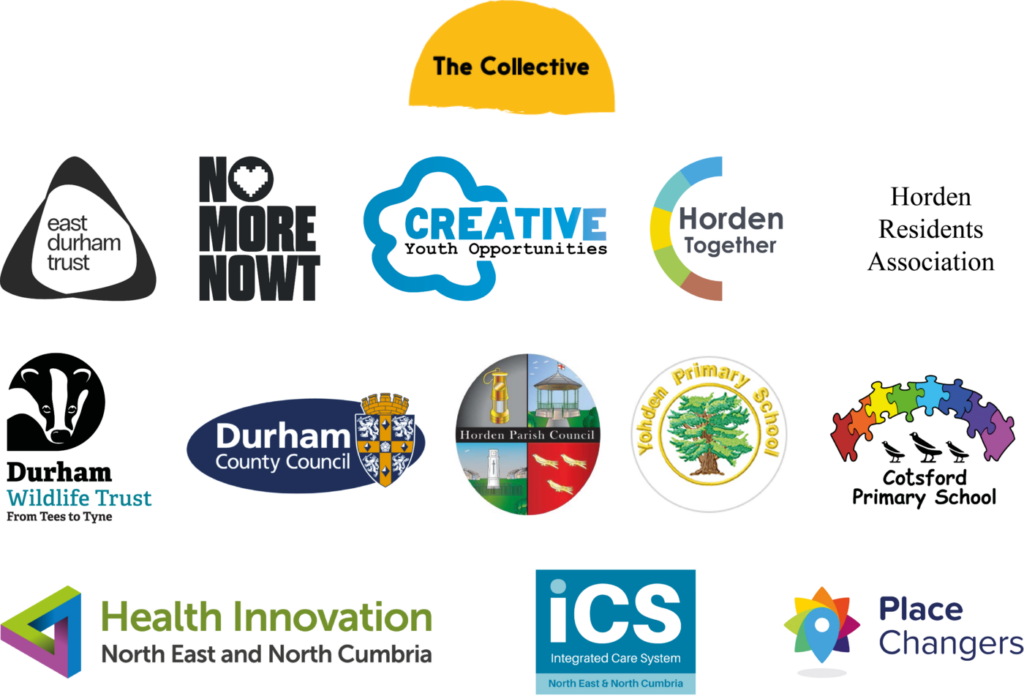
To all the adults, families, children, young people that have been involved in any way as a resident or friend of Horden. To all the organisations that have led, co-funded, supported and contributed to the activities listed in these reports, big thanks. The reports document and shares that work, past and present. It is a record and call for action for the voices of the people of Horden to be listened to and heard in creative ways that can help the community to be equal partners in creating healthy, happy places.
This project and Healthy Happy Places was made possible through funding and support from the Integrated Care System Mental Health Programme and Health Innovation North East and North Cumbria. The Horden project also benefitted from additional funded activity led by Horden Together, East Durham Trust and East Durham Creates.

The project used digital mapping using a platform called Placechangers, as well as face to face creative mapping using large format printed maps in community venues across the village.
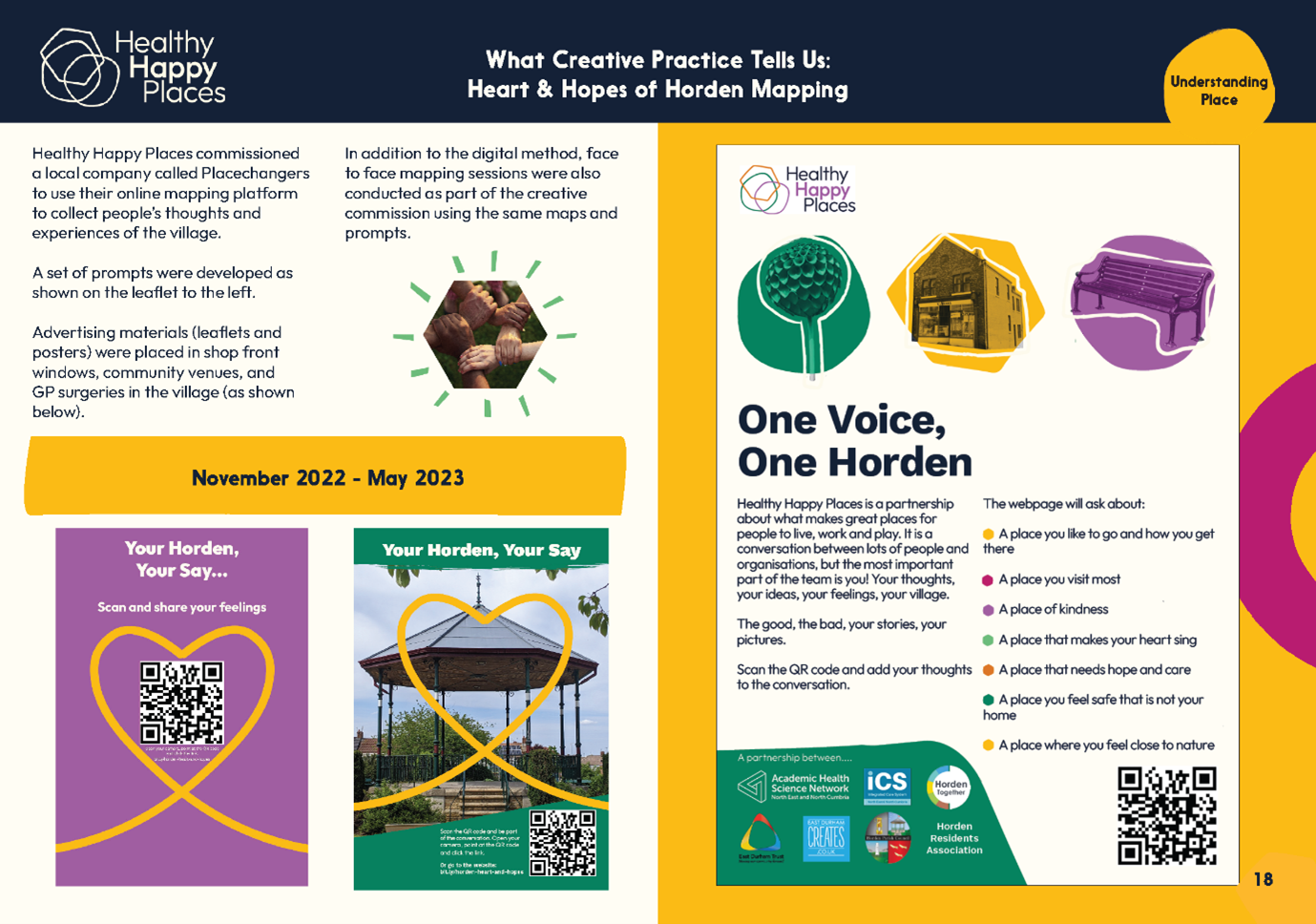
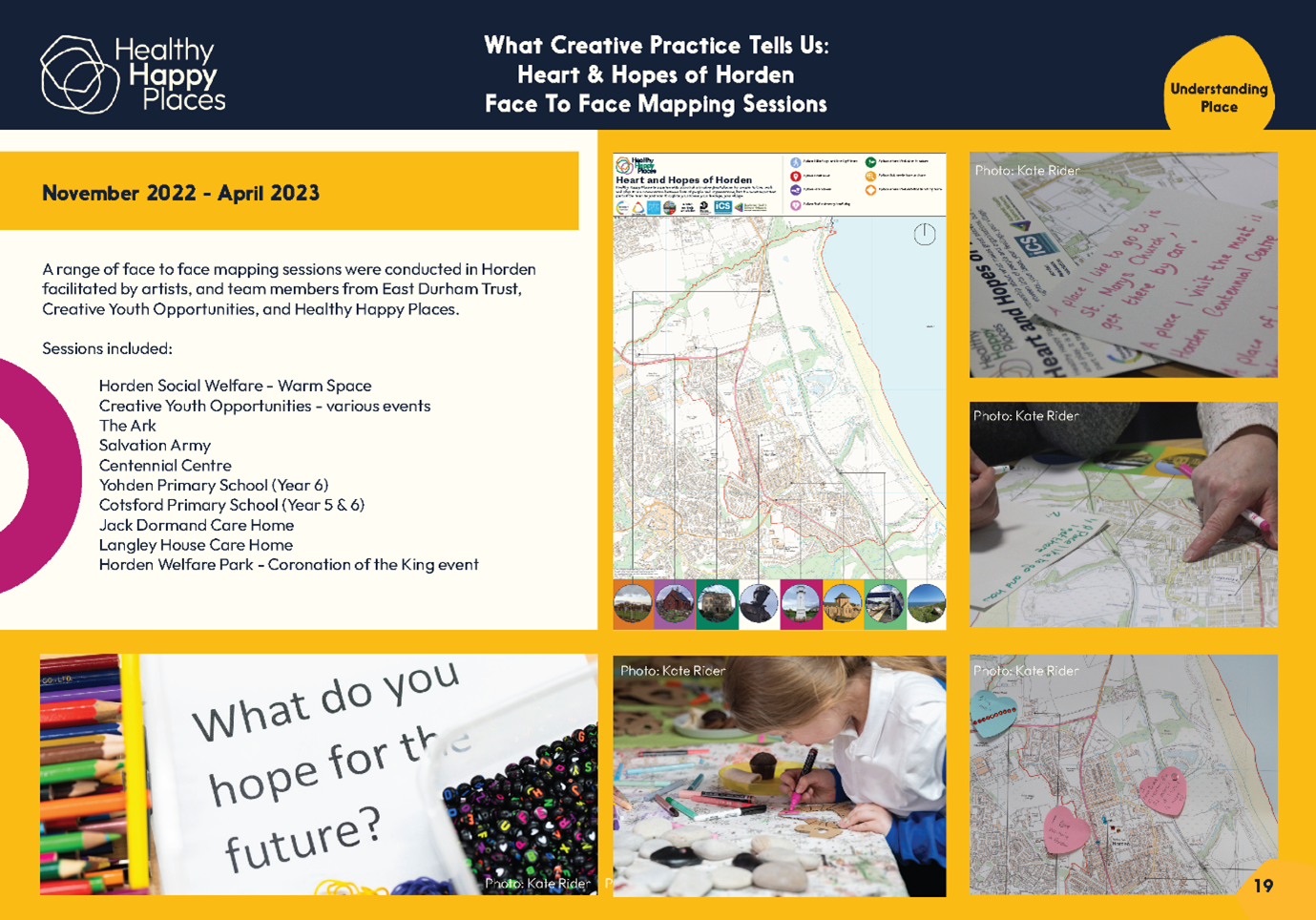
The reports below provide a brief and more detailed overview of the Healthy Happy Places work to share findings about how the people and organisations of Horden understand and experience their place. It is a collection of stories, maps, data, and evidence, intended to be from a community perspective which can guide future interventions in the village.
To access the summary report click here or on the image below:
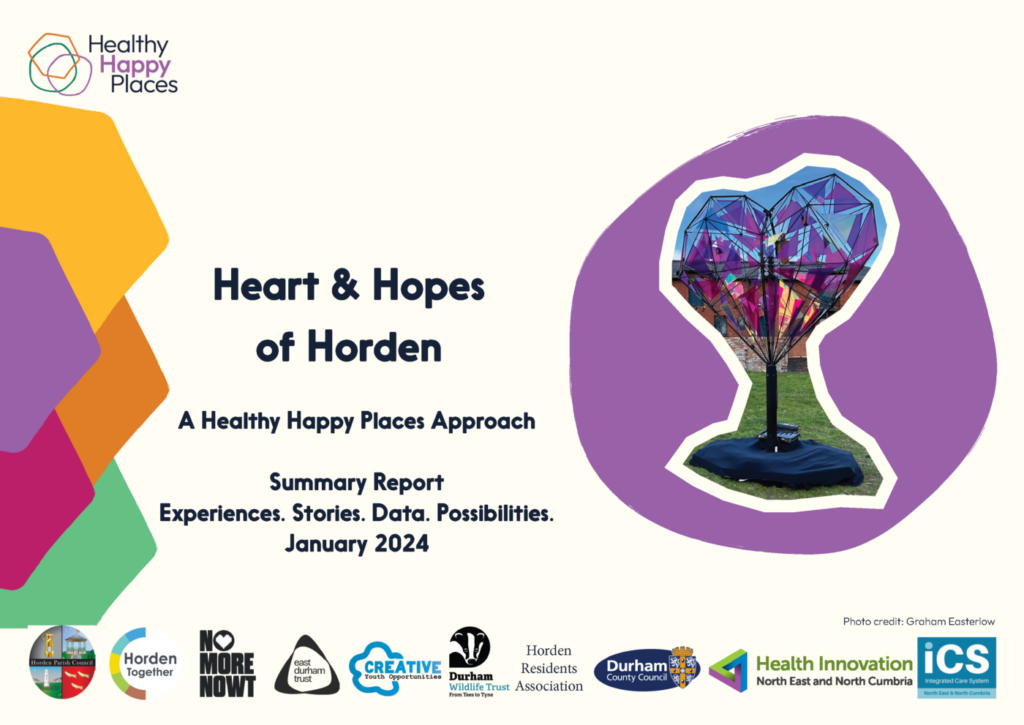
To access a more detailed report please email [email protected]
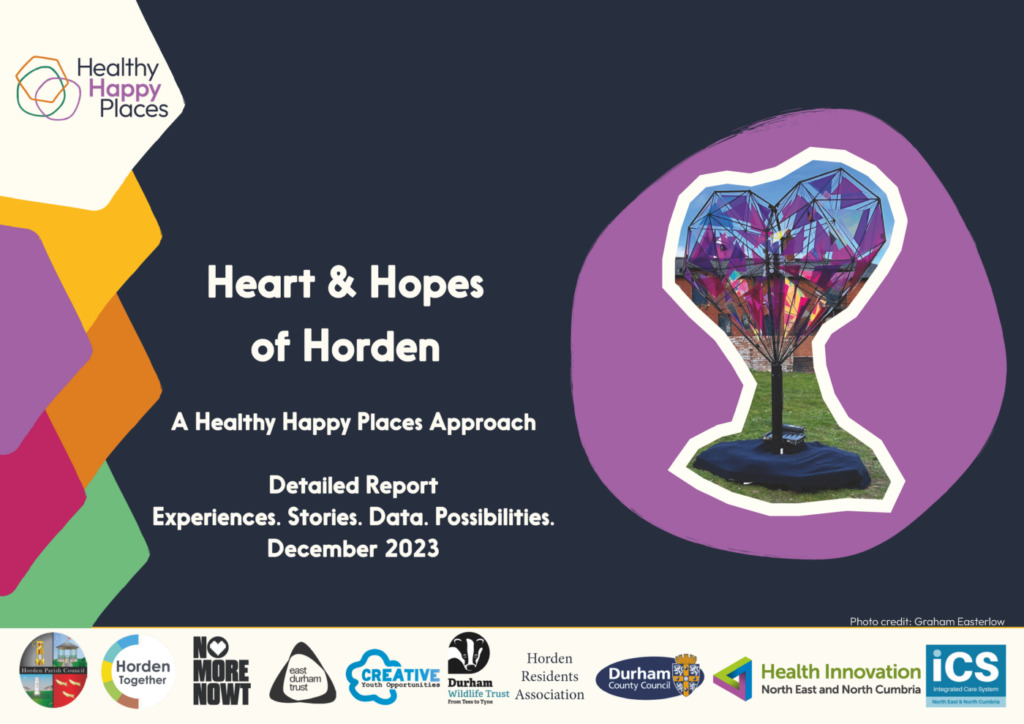
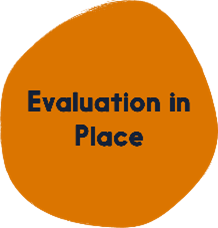 As a resident of Horden I read the report and found it a sensitively handled, useful endeavour.
As a resident of Horden I read the report and found it a sensitively handled, useful endeavour.
The report was very detailed yet set out in a way that made it easy to read and I was able to return to pick out specific pieces of information.
It was clear that the author/s had spent some time with the people of the village and it was lovely to see comments from residents put straight into the report.
The illustrations and graphs were very informative and set out at a glance some important information comparisons, the colour coding made it easier for me to take on board and understand the data that was presented.
It was good to have a photographic reminder of the beauty of our local area after reading the difficult realities contained in the data graphs.
I found the report sobering in parts but also enlightening, in particular when reading about the idea of collective trauma and the positive suggestions for the village to approach that.
Ultimately the report has illustrated that residents do have a voice and if the suggestions are taken on board, it will inspire progress in the years to come and hopefully help us realise we can have more control of what happens to the village and thus greater authority over our own futures.
Paula, Resident.
Living in Horden….. It’s like a stone in our shoe that we have learned to tolerate, it causes pain but we keep on walking because it has always been there, for some of us, our skin hardens protecting us against the pain of the stone, others get blisters and sores form the stone and these become infected and we become ill. This report reminds us that we have a great big damn stone in our shoe and shows us the ways we might start to remove it.

If you’d like to join the Healthy Happy Places mailing list, please sign up here.. We’d love to have you join us on the journey.
You might also be interested to check out our webinar series
Thanks for reading.
